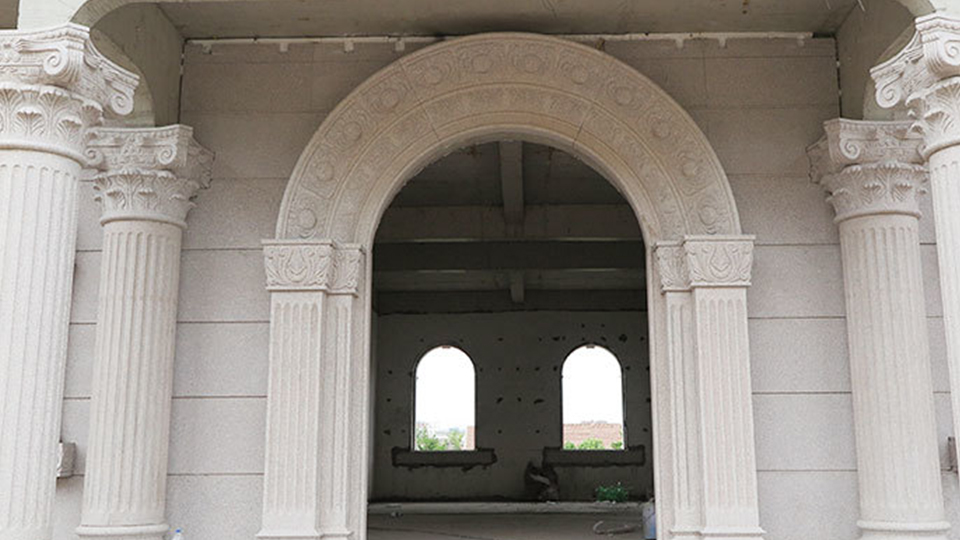

Introduction: Honoring a Legacy Through Careful Restoration
A headstone is more than just a marker; it is a permanent tribute, a tangible link to a loved one's memory. As a headstone stands exposed to the elements over time, it naturally accumulates dirt, grime, and biological growth, which can obscure inscriptions and diminish its appearance. For a family member or a cemetery caretaker, the task of cleaning a granite headstone is a profound act of respect and care. However, this is not a job to be taken lightly. The wrong cleaning method or chemicals can cause permanent damage to the stone, undoing the very purpose of the effort.
Granite, a durable and beautiful stone, requires a specific approach to cleaning. Its unique properties, while making it resilient, also dictate a careful process to avoid etching, scratching, or staining. We will detail the necessary tools and materials, explain the science behind the cleaning process, and provide expert advice on avoiding common mistakes. The goal is to equip you with the knowledge to restore the headstone's appearance, ensuring the legacy it represents remains clear and honored.

The Science of Granite and the Sources of Grime
To clean a granite headstone effectively, you must first understand the material you are working with and the types of contaminants you are trying to remove.
Granite's Composition: As an igneous rock, granite is composed primarily of feldspar, quartz, and mica. These minerals give granite its strength and its classic, crystalline appearance. A polished granite surface is non-porous, making it highly resistant to staining and water damage. However, unpolished or "honed" areas can be slightly more porous, and over time, even polished surfaces can develop microscopic imperfections that allow for the accumulation of dirt.
Types of Contaminants: The grime on a headstone is rarely just simple dirt. It is a complex mixture of:
Environmental Debris: Dust, pollen, and general atmospheric pollutants.
Biological Growth: This is the most common and stubborn type of contamination. It includes lichens, moss, algae, and mold. These organisms embed themselves in the pores of the stone and can be difficult to remove without the right products.
Water Stains: From rainwater runoff or sprinkler systems, these can leave mineral deposits on the surface.
Bird Droppings and Other Organic Stains: These can be particularly acidic and may require special attention.
Step 1: Gathering the Right Tools and Materials
Before you begin, it's crucial to assemble all the necessary tools and materials. Using the wrong products can cause irreversible damage.
Essential Tools:
Soft-Bristle Brushes: A variety of nylon or natural-fiber brushes are essential. You'll need a large brush for general cleaning and a smaller brush (like a toothbrush) for intricate details and lettering. Never use a wire brush or a stiff-bristle brush, as they will scratch the polished surface of the granite.
Plastic or Wooden Scraper: For removing large pieces of moss or lichen. Avoid metal scrapers, which can scratch the stone.
Spray Bottle: For applying cleaning solutions to the headstone.
Buckets: A large bucket for water and a smaller one for the cleaning solution.
Sponges and Soft Cloths: For wiping and drying the stone.
Personal Protective Equipment (PPE): Gloves and eye protection are a must, especially when working with cleaning solutions.
Approved Cleaning Solutions:
Plain Water: For a lightly soiled headstone, water is often all you need.
Non-Ionic Detergents: These are gentle, pH-neutral soaps that won't etch or damage the stone. A non-ionic detergent is a surfactant that doesn't carry a charge, making it less likely to react with the minerals in the granite. Brands like D/2 Biological Solution, Wet & Forget, or even a few drops of a non-ionic dish soap (check the label) are suitable.
Water-Based Biocides (for Lichen and Moss): For stubborn biological growth, a specialized cleaner is necessary. D/2 Biological Solution is an industry-standard product for this purpose. It is a water-based, non-toxic, and pH-neutral biocide that kills the biological growth without harming the stone.
Hydrogen Peroxide: A dilute solution of 3% hydrogen peroxide can be effective for removing some organic stains.

Products to AVOID:
Bleach (Sodium Hypochlorite): Bleach can stain and pit granite. It can also damage the surrounding grass and plants.
Acidic Cleaners: Acids, even in weak concentrations, can etch and permanently dull the polished surface of the granite. This includes vinegar, lemon juice, and many common household cleaners.
Abrasive Cleaners: Powdered cleansers or scouring pads will scratch the polished surface.
High-Pressure Washers (Pressure Washers): The high pressure can chip the stone, dislodge particles, and even push water deep into microscopic cracks, which can lead to freeze-thaw damage in colder climates.
Step 2: The Cleaning Process
The cleaning process should be methodical and gentle. Follow these steps to ensure a safe and effective cleaning.
Step 2a: Preliminary Inspection and Dry Cleaning
Begin by inspecting the headstone for any existing cracks, chips, or loose sections. If you find any, proceed with extreme caution or seek professional help. Use your plastic or wooden scraper to gently remove any large, loose pieces of moss or lichen. Do not force anything off. The goal is to remove what is already loose without scratching the stone.
Step 2b: Rinsing the Headstone
Using a bucket of clean water and a soft cloth, thoroughly wet the entire surface of the headstone. This serves two purposes: it helps to loosen the initial layer of dirt, and it saturates the stone, preventing it from immediately absorbing the cleaning solution, which could lead to streaking.
Step 2c: Applying the Cleaning Solution
For a lightly soiled stone, a simple solution of non-ionic detergent in water is sufficient. For a headstone with biological growth, a specialized biocide like D/2 is the best choice.
For Detergent: Mix a small amount of non-ionic detergent into a bucket of water. Dip your soft-bristle brush into the solution and begin to scrub the headstone, working from the top down.
For Biocide: Spray the biocide directly onto the headstone, ensuring the entire surface is saturated.
Step 2d: Gentle Scrubbing
With the cleaning solution applied, begin to gently scrub the stone with your soft-bristle brush. Use a circular motion for the main body of the stone and a smaller brush to carefully clean around the letters and any intricate carvings. Be patient and methodical. The goal is not to use force, but to let the cleaning solution and the gentle scrubbing do the work.
Step 2e: Dwell Time (for Stubborn Stains)
For headstones with heavy biological growth, it's essential to let the biocide sit and work its magic. Refer to the manufacturer's instructions for the recommended dwell time, which can range from 15 minutes to several hours. During this time, keep the stone wet by misting it with water or the cleaning solution. Do not let the solution dry on the stone, as this can lead to streaking.
Step 2f: Final Rinsing
After the cleaning solution has had time to work, thoroughly rinse the entire headstone with a generous amount of clean water. This step is critical to remove all traces of the cleaning solution and the loosened debris. Use multiple buckets of water or, if a hose with a low-pressure nozzle is available, use that. Ensure the water drains away from the headstone to prevent re-staining.
Step 2g: Post-Cleaning Inspection and Reapplication
After the headstone is rinsed, allow it to air dry. As it dries, you will see the full effect of your cleaning. If there are still stubborn spots or remaining biological growth, you may need to repeat the process. With a biocide like D/2, the full effect may not be visible for several weeks or months, as it continues to work over time.
Step 3: Dealing with Specific Stains
Sometimes, a headstone will have a specific type of stain that requires a targeted approach.
Rust Stains: These can come from metal cemetery ornaments. A dedicated rust remover for stone, such as a poultice with a rust-removing agent, may be necessary. Do not use a rust remover designed for metal on granite.
Organic Stains: For stains from leaves, berries, or bird droppings, a poultice made with a mild hydrogen peroxide solution and a neutral absorbent material can be effective.
Oil or Grease Stains: These can be very difficult to remove. A poultice made with a solvent-based cleaner is often required. It's best to seek professional advice for these types of stains.
The Importance of Professional Care and When to Call an Expert
While cleaning a granite headstone yourself is a rewarding act, there are times when it's best to call a professional. You should contact a professional if:
The headstone is old or fragile.
There are significant cracks or structural damage.
You are dealing with a historic monument.
You are unsure about the type of stone or the type of stain.
The headstone is made of a different material, such as marble or sandstone, which requires a completely different cleaning protocol.
Professionals have access to specialized tools, cleaning agents, and knowledge that can address complex issues without causing damage.
Conclusion: A Legacy Preserved with Care
Cleaning a granite headstone is a process that requires patience, respect, and the right technical approach. By understanding the properties of granite and the nature of the contaminants, you can avoid common mistakes and ensure a successful outcome. The key principles are simple: use gentle tools, pH-neutral cleaners, and plenty of clean water. Avoid harsh chemicals, abrasive brushes, and high-pressure washing at all costs.
The result of your careful work will be a headstone that is restored to its original beauty, with the names and dates once again standing out clearly. It is a powerful way to honor a memory and preserve a piece of history. By following this guide, you can ensure that this tribute remains as enduring and dignified as the legacy it represents.
Name: selena
Mobile:8613176910558
Tel:86-13176910558
Whatsapp:8619323167067
Email:409284553@qq.com
Add:Laizhou ,Shandong , Shandong Province, China